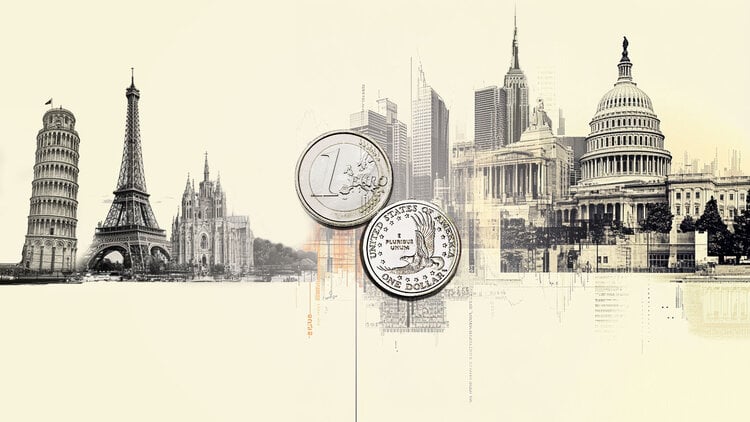- EUR/USD remains trapped in near-term congestion, but intraday price action is drifting into the high side.
- It’s a thin economic data docket overall this week as headlines continue to dominate market flows.
- Thursday will be the key data day for EUR/USD, with EU and US PMIs on the offering.
EUR/USD tested into the high end on Monday, drifting briefly toward the 1.1300 handle before settling back slightly, although the pair still ended the day higher overall. However, Fiber remains trapped in a near-term consolidation zone.
Last Friday, the Moody’s ratings agency downgraded the United States (US) by removing its final AAA rating on Treasuries, citing increasing US debt and long-standing government deficits that various presidential administrations either neglect or fail to manage effectively. While initial investor reactions were shaky, sentiment quickly stabilized and the impact on US creditworthiness was largely dismissed. However, the Treasury markets have their challenges: 30-year yields surpassed 5% on Monday, and 10-year yields exceeded 4.5%.
This week, Federal Reserve (Fed) officials have been actively working to manage market expectations regarding potential rate cuts. Fed policymakers are consistently reminding investors that ongoing tariff and trade policies in the US complicate forecasts of the domestic economy, which in turn influences policy rate adjustments.
On Thursday, reports on the German and pan-European HCOB Purchasing Managers Index (PMI) will be released, presenting a double-header of business expectations surveys on both sides of the Pacific. A moderate rise is anticipated for both the German and EU-wide PMIs. The key economic data release from the US will be the S&P Global PMI figures for May, where median market expectations suggest a slight decline in both manufacturing and services components of the PMI report due to the impact of tariffs on business spending.
EUR/USD price action
Monday’s bullish push saw EUR/USD approach the 1.1300 handle, but buyers remain unable to recapture the key technical level. Price action has hit a consolidation phase after finding technical support from the 50-day Exponential Moving Average (EMA) near 1.1085. Momentum in either direction has stalled out, and technical oscillators are getting stuck in midrange zones.
EUR/USD daily chart

Euro FAQs
The Euro is the currency for the 19 European Union countries that belong to the Eurozone. It is the second most heavily traded currency in the world behind the US Dollar. In 2022, it accounted for 31% of all foreign exchange transactions, with an average daily turnover of over $2.2 trillion a day.
EUR/USD is the most heavily traded currency pair in the world, accounting for an estimated 30% off all transactions, followed by EUR/JPY (4%), EUR/GBP (3%) and EUR/AUD (2%).
The European Central Bank (ECB) in Frankfurt, Germany, is the reserve bank for the Eurozone. The ECB sets interest rates and manages monetary policy.
The ECB’s primary mandate is to maintain price stability, which means either controlling inflation or stimulating growth. Its primary tool is the raising or lowering of interest rates. Relatively high interest rates – or the expectation of higher rates – will usually benefit the Euro and vice versa.
The ECB Governing Council makes monetary policy decisions at meetings held eight times a year. Decisions are made by heads of the Eurozone national banks and six permanent members, including the President of the ECB, Christine Lagarde.
Eurozone inflation data, measured by the Harmonized Index of Consumer Prices (HICP), is an important econometric for the Euro. If inflation rises more than expected, especially if above the ECB’s 2% target, it obliges the ECB to raise interest rates to bring it back under control.
Relatively high interest rates compared to its counterparts will usually benefit the Euro, as it makes the region more attractive as a place for global investors to park their money.
Data releases gauge the health of the economy and can impact on the Euro. Indicators such as GDP, Manufacturing and Services PMIs, employment, and consumer sentiment surveys can all influence the direction of the single currency.
A strong economy is good for the Euro. Not only does it attract more foreign investment but it may encourage the ECB to put up interest rates, which will directly strengthen the Euro. Otherwise, if economic data is weak, the Euro is likely to fall.
Economic data for the four largest economies in the euro area (Germany, France, Italy and Spain) are especially significant, as they account for 75% of the Eurozone’s economy.
Another significant data release for the Euro is the Trade Balance. This indicator measures the difference between what a country earns from its exports and what it spends on imports over a given period.
If a country produces highly sought after exports then its currency will gain in value purely from the extra demand created from foreign buyers seeking to purchase these goods. Therefore, a positive net Trade Balance strengthens a currency and vice versa for a negative balance.

